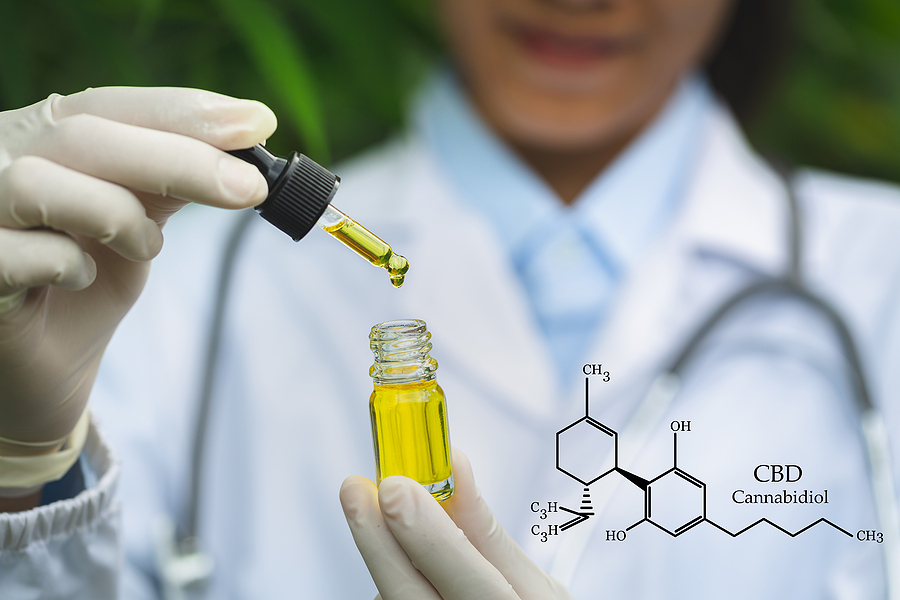Hemp and cannabis plants have over 100 different compounds, of which by far the most attention has been placed on THC and CBD, which given that most hemp is grown selectively to primarily contain CBD is understandable.
A lot of people have been discussing CBD products as having a range of relaxing and pain-relieving properties, with three specific CBD oil products being prescribed for severe rare forms of epilepsy, to help reduce chemotherapy side effects and to assist people with multiple sclerosis.
However, as the range of novel foods, gummies and oils containing CBD increase along with public awareness, further studies have started on other cannabinoids to see if they share a similar benefit to cannabidiol, with one, in particular, CBG, having potentially similar characteristics.
What Is CBG?
By comparison, cannabigerol (CBG) is one of over 100 cannabinoid compounds, primarily found in young hemp and cannabis plants and in much smaller quantities in mature plants as cannabigerol acid breaks down into CBD and THC.
It was first isolated back in 1964 along with several other compounds, but as CBD received more attention, medical research is limited and still in a pre-clinical stage.
However, early research suggests that it may possess similar if not stronger pain-relieving properties than THC but without the psychoactive effect that makes THC illegal in many countries.
These are, of course, preliminary studies, but they do suggest CBG compounds have a range of antioxidant, pain-relieving, anti-inflammatory and neuroprotective properties, caused by interactions with the CB1 and CB2 receptors.
Further studies will be needed to confirm these initial findings, which could take a long time, as it did for CBD.
Differences Between The Compounds
CBD and CBG, despite being from the same plant and having similar properties, in no small part due to CBG being a foundation compound for both CBD and THC, there are quite significant differences between the two.
The most important one from an active ingredient standpoint is the different ways the two compounds interact with the body.
A study on one specific serotonin receptor, for example, had the two compounds act in completely opposite ways, with CBD acting as an anti-nausea agonist, whilst CBG acts as an antagonist, which may alter the effects of psychiatric medications.
One other study, undertaken on rats, found that whilst CBD acts as an appetite suppressant and reduces the amount of food eaten, CBG does the exact opposite, and doubled the normal food intake in an experiment.
CBG also bind to other families of receptors than either CBD or THC, such as the PPAR receptors that are part of the nervous system and the TRPs which are connected to temperature sensitivity which is one of the reasons why it has been connected to such different effects.
The Entourage Effect
One major debate in the world of CBD and cannabinoids, in general, is the importance of the entourage effect when used in CBD balms, oils and gummies.
The entourage effect theory suggests that whilst CBD is available as a purely isolated compound, it is potentially more effective when used in combination with other cannabinoids.
There are two primary ways in which the entourage effect is taken full advantage of. The first is known as the full spectrum approach, which contains a broad range of cannabinoids and includes THC in microscopic quantities.
Some products will retain a wide range of cannabinoids except for the trace amounts of THC, and this category is known as broad-spectrum products, which strike a balance between the two approaches.
Whilst studies have suggested that there may be benefits to taking terpenes and phytocannabinoids together with CBD, much more research is required to prove or ultimately disprove the effects.
An example of this in action, albeit with a prescription-only medication is the case of Sativex, a high-THC medicine used in the treatment of MS. It contains 48mg of THC, with an equal quantity of CBD.
This is in no small part because of the way THC and CBD work in tandem, as whilst that extreme level of THC would be excessive if not outright dangerous to take, it is balanced by the effects of CBD.
Other studies have suggested that THC has had a stronger effect when taken alone than in tandem with CBD and other cannabinoids such as CBG, suggesting that it works almost as an anti-psychotic to balance out the effects of THC.
Much more research is needed to confirm the effects of any given compound, and studies on CBD took decades from initial novel research before products that were legal to sell were produced, and it will be interesting to see how CBG progresses over the next few years.

